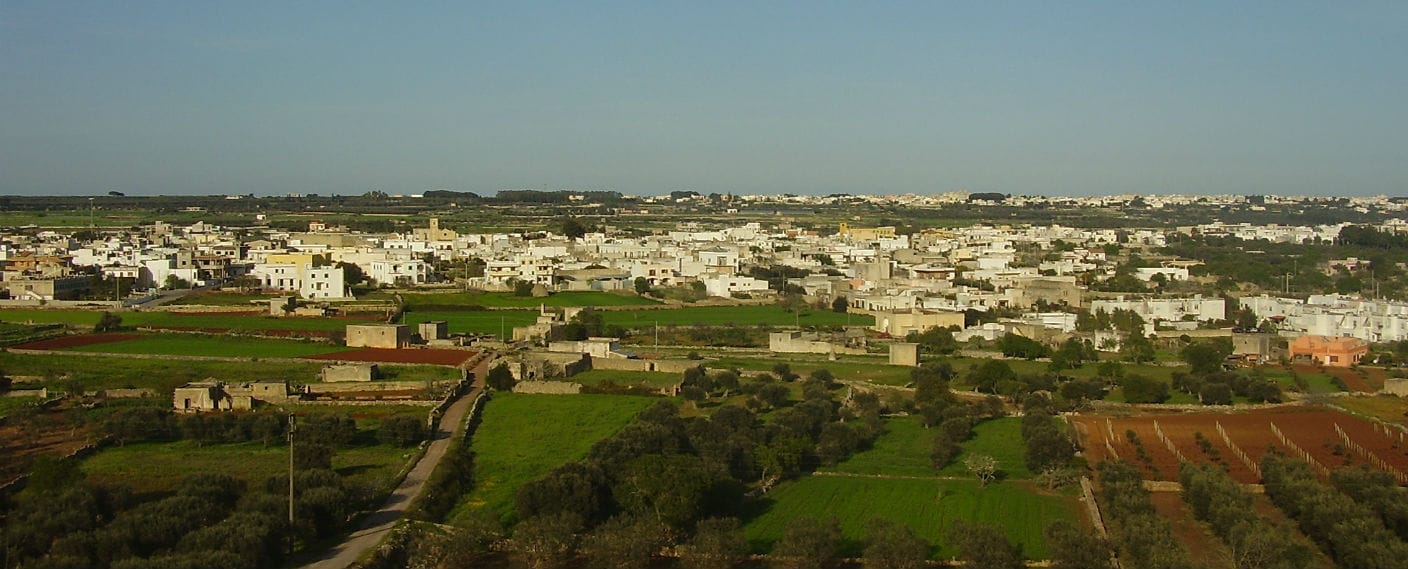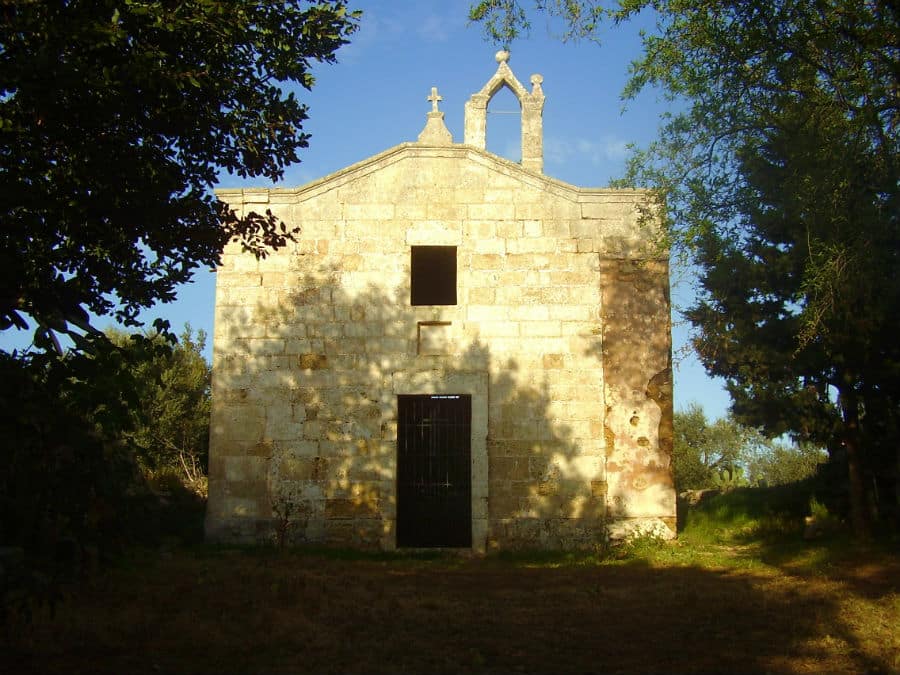Pilgrimage destination on the occasion of the Marian’s festivities at dawn in August and, according to some, the source of inspiration for artists, this small church appears between the campaigns in the highest point of the hill of Vereto. The building conserves inside a magnificent fresco depicting Saint Paul the Apostle. This is one of the oldest and most original representations among those included in the vast corpus (frescoes, statues, paintings, votive shrines) of Saint Paul’s iconography attested in Salento. Inserted in a wider cycle hagiographical the fresco depicting Saint Paul in a solemn pose and threatening with the classic attribute of the sword around which are twisted two snakes. At the foot of the holy, then, there is depicted a small bestiary: a snake, a scorpion, a spider and a little higher, two snakes twisted in caduceus. The fresco, probably dating late sixteenth-century, presents itself as a unique in its genre for the wealth of symbolic metaphors that seem to be directed toward a continuous mix of citations educated and references to the popular imagination. The presence of this fresco binds the Church to a small mystery linked to a symbolic figure of Christianity: Saint Paul and his association with the phenomenon of tarantismo. The worship building also had to fulfill a function in the cemetery, as evidenced by the discovery of two tombs at the apse, dug into the earth and severely damaged by modern holes. Immediately below one of these tombs was identified part of a structure in the big square blocks of limestone, flanked by an accommodation of large stones hewn or smoothed, interpretable perhaps as remains of a road layout.



